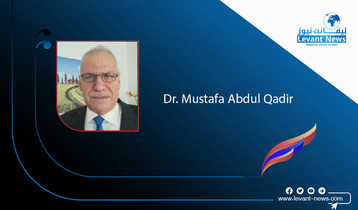-
Could Mahsa Amini's death mark the end of an era!

Last week, Iran's Islamic Revolutionary Guard Corps (IRGC) unleashed a wave of precision- guided missiles and assault drones on Kurdistan Regions Erbil and Sulaimaniye provinces targeting bases of Iranian- Kurdish opposition groups accused of encouraging and fuelling unrest at home.
Ostensibly, the story revolves around the death of the Kurdish women Mahsa (Zhina) Amin, 22, who on September 13 was picked- up by morality police from a Tehran metro station for breaching allegedly the republic's strict dress code for women.
While Iranian authorities claim Mahsa died of a heart attack, her father- Amjad Amini- a government employee, said his daughter was killed at police custody. Either case, the "stranger to Tehran," became a world icon of resistance to repression.
The local occurrence that erupted at Mahsa's funeral procession in the Kurdish (Rojhelat) town of Saqez snowballed spontaneously ensuing angry protests in much of the country.
The IRGC blames Kurdish "separatist groups" operating in Kurdistan Regional Government (KRG) for the ensued nation- wide violence and unrest. For the first time in years, the country is grappled with a most serious challenge.
However, Mahsa's death was a resounding one both at home and abroad and a tipping point that could change the course of events in Iran's modern history. Up to now, the IRGC has failed to contain the snowballing protests.
Failing to quell the unrest, Iranian authorities employed another routinely tactic, the one that could easily gain credence by the regime's followers. Serving the end, cross- border operation "the Prophet of God" was launched in Erbil and Sulaimaniye.
Iran's aerial bombardment of Koya, some 60 kilometers east of Erbil, Zargwez, some 15 kilometers in east Sulaimaniye and Altun Kupri, some 40 kilometers north of Kirkuk, left 18 death and caused considerable damages.
For days, Kurdish parties have endured days of relentless air strikes. However, Erbil and Sulaimaniye's were much more coordinated.
However, apart from the mere targeting bases of Kurdistan Democratic Party of Iran (PDK-I), among others, there seems be a set of ingrained reasons lying behind Wednesday's bombardment.
Unquestionably, one of the main reasons is to divert the attention from internal protests and domestic violence to elsewhere. By doing so, the scene of events were transferred from Iran to Kurdistan representing a different cause.
The protests erupted following the death of Mahsa are not the first in Iranian history. However, differently, unlike the previous ones (2017 and 2019) which remained confined to certain areas and towns, these ones are taking place in a wider scale in major cities and shared by all society classes and ethnicities.
This time, even deeply religious and conservative cities such as Shiraz, Qum and the shrine city of Mashhad are not an exception to the rule. Protests are said to taking place in 150 towns and cities.
The debatable and unjustified murder in Tehran of the Kurdish woman has raised yet unanswered questions on the mission of the so-called morality police in particular. Many supporters of the theologically- oriented regime wonder why Mahsa so barbarically lost life and for what reasons.
Protesters chant "Death to the Dictator," a reference to the ailing Supreme Leader Ayatollah Ali Khamenei, 83, whose portraits are widely being torn down or set on fire. This act was a taboo until recently.
Symbolically, women are seen taking off their headscarves on streets in acts of defiance. Many have burned their headscarves and flocks too.
Secondly, by such an extensive and well-coordinated bombardment, Iran wants to display its advanced force, notably its increasing drone power technology. The impact Iranian- manufactured drones caused against the Ukrainian forces are widely felt since recently being employed by the Russian forces in the sky of Ukraine.
This needs to be felt elsewhere to echo a sense of national pride against "rioters" linked to "foreign enemies" of the republic.
Reports said some 73 ballistic missiles and 20 drones were employed in four areas simultaneously over Koya and elsewhere.
Thirdly, amid stalled negotiations over the Joint Comprehensive Plan of Action (JCPA) known otherwise as the Iran nuclear deal, the Islamic Republic wants to show muscles that Iran has the capability and more importantly will to behave beyond its national borders if its interests are threatened or endangered. It seeks to entrench itself against any scenarios that could take place.
This has some foundation to build upon in a statement attributed to Chief of Staff of Iranian Armed Forces Gen. Mohammad Bagheri's that his country has the right to confront and retaliate against the United States, and aware of their bases inside Kurdistan Region.
In this sense, the tit- for- tat drone strikes between the U.S. and Iranian- backed factions in east Syria could take place on KRG territories.
Fourthly and most importantly, by shouldering the blame on the Iranian Kurdish opposition parties in KRG, the regime bestows upon itself the "implied justification" to deflect local grievances felt at home into external plots, and to send a domestic message to protesters. Such a message tacitly implies that unless protests are brought to a halt, punishment is a severe one for those attached to "malicious" powers.
The recent (mostly feminine) enrages against a masculine authoritarian regime that over the course of four decades have kept women in darkness, signifies something is changing within the structure of a society that was kept repressed for long years.
For the time being, the experienced regime forces seem bartered with the persistence of protests though fatality toll increases.
Being the biggest losers in the country since the coming into power of the Islamic Revolution in 1979, Mahsa Amini seems to have made the voice of Iranian women a heard one. A roaring one, however.
On the sidelines of the United Nations General Assembly 77th session in New York, Iranian President Ebrahim Raisi said in a news conference "If her death was due to negligence, it will definitely be investigated, I promise to follow up on the issue regardless of whether the international forum take a stand or not."
However, upon home return, and as events were rapidly developing, Raisi said despite "grief and sorrow" of Amini's death, public security "is a red line of the Islamic Republic of Iran and no one is allowed to break the law and cause chaos."
This, among others, could be a precursor to what could take place in the days to follow in a country that shaped all world's religions in the past, and still garners world attention at present, a country where Zoroaster, once fleeing persecution, spent long years on Mount Savalan meditating, however.

Lazghine Ya'qoube
You May Also Like
Popular Posts
Caricature
BENEFIT Sponsors BuildHer...
- April 23, 2025
BENEFIT, the Kingdom’s innovator and leading company in Fintech and electronic financial transactions service, has sponsored the BuildHer CityHack 2025 Hackathon, a two-day event spearheaded by the College of Engineering and Technology at the Royal University for Women (RUW).
Aimed at secondary school students, the event brought together a distinguished group of academic professionals and technology experts to mentor and inspire young participants.
More than 100 high school students from across the Kingdom of Bahrain took part in the hackathon, which featured an intensive programme of training workshops and hands-on sessions. These activities were tailored to enhance participants’ critical thinking, collaborative problem-solving, and team-building capabilities, while also encouraging the development of practical and sustainable solutions to contemporary challenges using modern technological tools.
BENEFIT’s Chief Executive Mr. Abdulwahed AlJanahi, commented: “Our support for this educational hackathon reflects our long-term strategic vision to nurture the talents of emerging national youth and empower the next generation of accomplished female leaders in technology. By fostering creativity and innovation, we aim to contribute meaningfully to Bahrain’s comprehensive development goals and align with the aspirations outlined in the Kingdom’s Vision 2030—an ambition in which BENEFIT plays a central role.”
Professor Riyadh Yousif Hamzah, President of the Royal University for Women, commented: “This initiative reflects our commitment to advancing women in STEM fields. We're cultivating a generation of creative, solution-driven female leaders who will drive national development. Our partnership with BENEFIT exemplifies the powerful synergy between academia and private sector in supporting educational innovation.”
Hanan Abdulla Hasan, Senior Manager, PR & Communication at BENEFIT, said: “We are honoured to collaborate with RUW in supporting this remarkable technology-focused event. It highlights our commitment to social responsibility, and our ongoing efforts to enhance the digital and innovation capabilities of young Bahraini women and foster their ability to harness technological tools in the service of a smarter, more sustainable future.”
For his part, Dr. Humam ElAgha, Acting Dean of the College of Engineering and Technology at the University, said: “BuildHer CityHack 2025 embodies our hands-on approach to education. By tackling real-world problems through creative thinking and sustainable solutions, we're preparing women to thrive in the knowledge economy – a cornerstone of the University's vision.”
opinion
Report
ads
Newsletter
Subscribe to our mailing list to get the new updates!






















